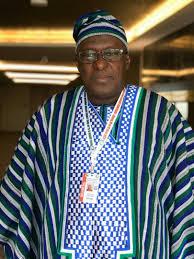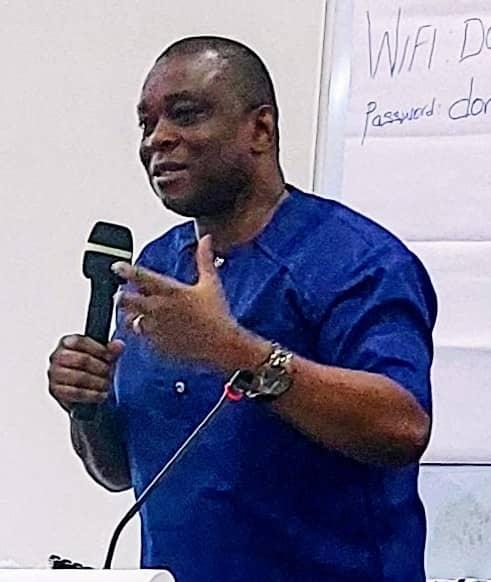Mid-Term Census; An Out-Of-Thought Idea
The Chief Census Officer for the proposed Sierra Leone 2020 Population and Housing Census, Professor Osman A. Sankoh has made a presentation at the weekly press conference of the Ministry of Information and Communications on the preparedness of Statistics Sierra Leone to conduct a National Population and Housing Census on the 4th of December, 2020.
In his presentation, the Chief Census Officer who is the Statistician General of Statistics Sierra Leone, the institution responsible for the conduct of censuses in the country, highlighted key technical issues that are of great concern to the people of Sierra Leone and bordered on the credibility of the Census Data.
1. Definition of key geographical divisions in the census – Enumeration Area (EA) and Locality
We want to draw the attention of the public that a locality is defined as a geographical area where a community of people live and share resources with a common culture and tradition of survival. Localities have existed since the time Sierra Leone was established as a country.
An Enumeration Area on the other hand is created within a locality or localities as a geographical unit mapped out for the purpose of Census data collection or intercensal surveys. An Enumeration Area is demarcated by a number of households within a locality or localities; usually, an enumeration area consists of between 80 and 120 households marked to be canvassed by one Data Collector called an Enumerator.
The Chief Census Officer confused his audience when he attempted to describe the different types of EAs in a Census instead he talked about types of localities. He described Type 1, 2 and 3 localities instead of Type 1, 2 and 3 EAs. There is nothing like Type 1, 2 or 3 locality but Type 1, 2 or 3 EA.
A Type 1 EA is an EA that comprises one locality; that is, the locality has the optimum number of households to form an EA. A Type 2 EA is an EA that is among several EAs in one locality. A Type 2 EA is found in urban localities where the number of households is above the 120. Type 3 EA is an EA that comprises two or more localities. This is where one locality does not have the optimum number of households to form an EA, and two or more localities are put together to form an EA.
2. The use of the term Mid-Term Census
It is clear in the Census Act of 2002 that the President may from time to time, on the advice of the Minister, by order made by order of Statutory Instrument, direct a Census to be taken on the population of Sierra Leone.
Based on this Act, any directive from the President to take a Census at any time should be considered as a normal Census and therefore should follow and adhere to international best practice. This is so because the data arising from such exercise will also be used by international organizations for comparison. The proposed Sierra Leone 2020 National Population and Housing Census should therefore not be an exception from this rule.
For the Chief Census Officer to inform the public that the proposed Sierra Leone 2020 Population and Housing Census will not include certain demographic, socioeconomic and housing characteristics is laying the foundation to undermine the credibility of the data to be collected. The proposed Population and Housing Census must therefore meet all standard criteria for a Census. This therefore means that all the basics population and housing characteristics that are included in a Census MUST not be excluded. All pre- census enumeration activities should be fully carried out if we are going to conduct a credible Census. These activities include the following:
- Establishment of the Census Advisory Committee and the Census Technical Committee: In a standard census activity, both committees should be broad based and must have a national character. They must include representatives from key institutions such as government departments and agencies; international and civil society organizations. All political parties, especially those represented in Parliament, data users and data producers must also be represented in these committees. This is to foster inclusiveness and ownership of the process and the data produced thereafter.
- Establishment of the Census Advisory Committee and the Census Technical Committee: In a standard census activity, both committees should be broad based and must have a national character. They must include representatives from key institutions such as government departments and agencies; international and civil society organizations. All political parties, especially those represented in Parliament, data users and data producers must also be represented in these committees. This is to foster inclusiveness and ownership of the process and the data produced thereafter.
- Establishment of the Census Advisory Committee and the Census Technical Committee: In a standard census activity, both committees should be broad based and must have a national character. They must include representatives from key institutions such as government departments and agencies; international and civil society organizations. All political parties, especially those represented in Parliament, data users and data producers must also be represented in these committees. This is to foster inclusiveness and ownership of the process and the data produced thereafter.
- Establishment of the Census Advisory Committee and the Census Technical Committee: In a standard census activity, both committees should be broad based and must have a national character. They must include representatives from key institutions such as government departments and agencies; international and civil society organizations. All political parties, especially those represented in Parliament, data users and data producers must also be represented in these committees. This is to foster inclusiveness and ownership of the process and the data produced thereafter.
- Publicity and advocacy: This should be an ongoing and continuous activity of the Census and must commence immediately after the proclamation by the President. The Cartographic Mapping staff are usually the John The Baptists in the Census publicity as they are the first to enter into communities and talk about the Census. The Chief Census Officer did not mention the strategy that has been put in place for an effective Census Publicity Programme. At this time, barely three months to the enumeration, town hall meetings at chiefdom level have not been scheduled. The Chief Census Officer should keep in mind that the credibility of the Census data largely depends on the information provided by the people and if these people are not fully aware of the type of information that is required of them to provide, they might provide undesirable information and hence affect the credibility of the data.
- Procurement of Census Enumeration Materials and Equipment: There are certain materials and equipments that are not readily available at Statistics Sierra Leone. These include census bags, vests, caps, ID cards etc. With the use of the CAPI technology, a huge quantity of Tablets/Smart phones will have to be procured and their total number will depend on the total number of enumeration areas in the country. This in turn will determine the number of enumerators, supervisors and field officers that will use these equipments for data collection. The CAPI technology requires that the Tablets should always be charged and the absence of electricity in almost 90 percent of the country might also threaten the credibility of the data. Adequate provision should be made for charging these equipments in the field during data collection. It should be noted that the procurement for some of these materials and equipments might take longer than one month and the time available to the start of enumeration could be inadequate to complete all procurement processes.
- Recruitment and training of field staff: This is very crucial for the successful outcome of the Census and the credibility of the data. This will require the usual procurement processes of advertising, receipt of applications, short listing, interviewing and selection. To date, no advert is out for the recruitment of District Census Officers, Field Officers, Supervisors and Enumerators as provided for in the Census Act of 2002. Receipt of application usually takes at least a month, short list listing, not less than two weeks etc. It is also important to note that this process should also involve district and chiefdom stakeholders.
- Training of field staff. There are three levels of training: a). Field Officers are trained at the regional level for at least 5 days on the questionnaire and another 5 days on the use of CAPI to complete the questionnaire ; b) Supervisors are trained at the district level for another 10 or 11 days and then c) . The enumerators are trained at chiefdom level for about 12 days. All trainings are consecutive. These levels of training are important to enhance local involvement in the Census process.
- Deployment of field staff and supervision of Census Enumeration: This might not be feasible as cartographic mapping of EAs which usually takes 18 months for the past censuses of 2004 and 2015 has not even commenced. Locality verification is not EA demarcation and must not be misunderstood. Can the Professor play the magic to conduct Cartographic Mapping in 3 months?
3. Census Timetable
The Chief Census Officer failed to present a comprehensive timetable for the pre-enumeration, enumeration and post enumeration activities. It is important for the public to know all the activities that are involved in the Census, when they will be executed and their respective duration. There is also need to mention possible risks in the implementation timetable and show how such risks can be mitigated. The presentation of the Chief Census Officer skipped this very important aspect of the Census. The absence of a Census timetable has left majority of the public with doubts as to whether the proposed Sierra Leone 2020 National Population and Housing Census is actually planned and will be carried out as proclaimed by the President.
The general public is hereby reminded that there is no short cut or back yard road in Census taking. All international best practice processes should be followed and adhered to. Therefore, on behalf of the public the following is demanded from the Chief Census Officer:
a). The Project Document for the proposed Sierra Leone 2020 Population and Housing Census
b). A pre- census enumeration activity timetable outlining all activities that MUST take place in a National Population and Housing Census;
c). A list of institutions/individuals of the Census Advisory Committee and Census Technical Committee;
d). A draft of the Census data collection instruments be presented to stakeholders for review; and
e) The percentage of the country that has so far been mapped into enumeration areas.
Stay with Sierra Express Media, for your trusted place in news!
© 2020, https:. All rights reserved.






